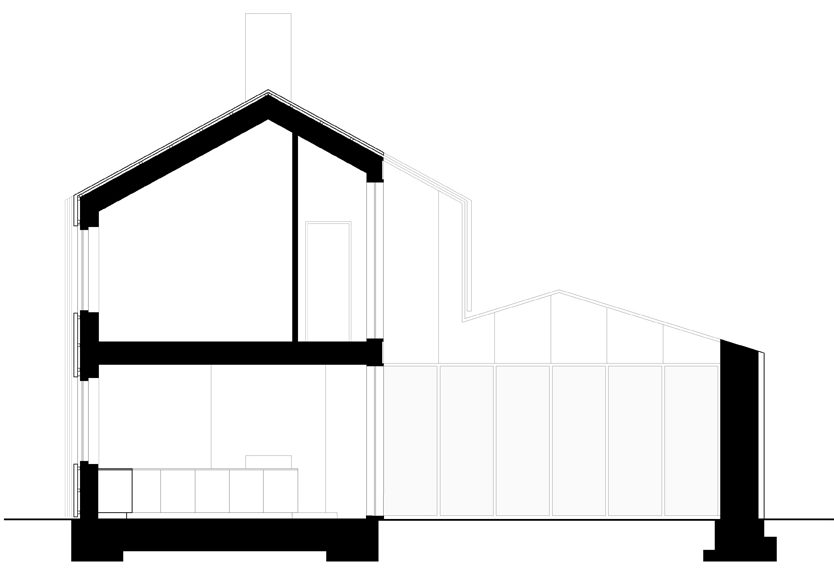A Cotswolds house by Bureau de Change Architects revives and reinterprets the local vernacular
Located in the Cotswolds, Long House by Bureau de Change Architects reinterprets the rural vernacular through interlocking barn forms and a palette of local materials. “We took the elongated forms of two 30-metre-long, timber chicken sheds as the starting point for the new design”, explains practice co-founder Billy Mavropoulos. “The house then became a play of traditional barn volumes which have been pushed and pulled to suit the needs of the client.”
The front volume incorporates an internal patio, hidden behind the elevation. The back volume is extruded to double height, creating a point of interest where the two barns interlock and are pushed into one another. A building within a building allows the far end of the front barn to house a studio for the artist owner, and a part of the second volume is broken off to form an annexe adjacent to the main house. Inside, the main living spaces fan out around the glazed, ceramic tile-clad patio, which acts as a focal point for the house.
Ground and first-floor plans; section
Materially, the house echoes much of the practice’s work in its attention to craft and detail. In this case, paying close attention to local historic building practices and approaches to materials as a means of creating a language that both revives and reinterprets the vernacular. The practice also envisages a slow process of weathering and age that will further embed the new house into its rural setting.
“The front barn has been built in dry stone wall by a local craftsman – not only for its local relevance, but for its inherent qualities of mass and muscularity”, says practice co-founder Katerina Dionysopoulou. “The facade is monolithic, with fewer openings to produce a heavier, solid volume at the front. As a counterpoint, the taller barn at the back is clad in a lighter-weight natural larch, which has been charred to a deep leathery black at each window recess. The charring has been brushed away to gently blend it into the natural larch, creating an ombré effect which emphasises the rhythmic push and pull of the window indentations.”
The house is also designed to Passivhaus principles with insulated concrete formwork creating a thermal envelope, limited openings on the south-facing facade, triple-glazed window, and a heat-recovery ventilation system.































